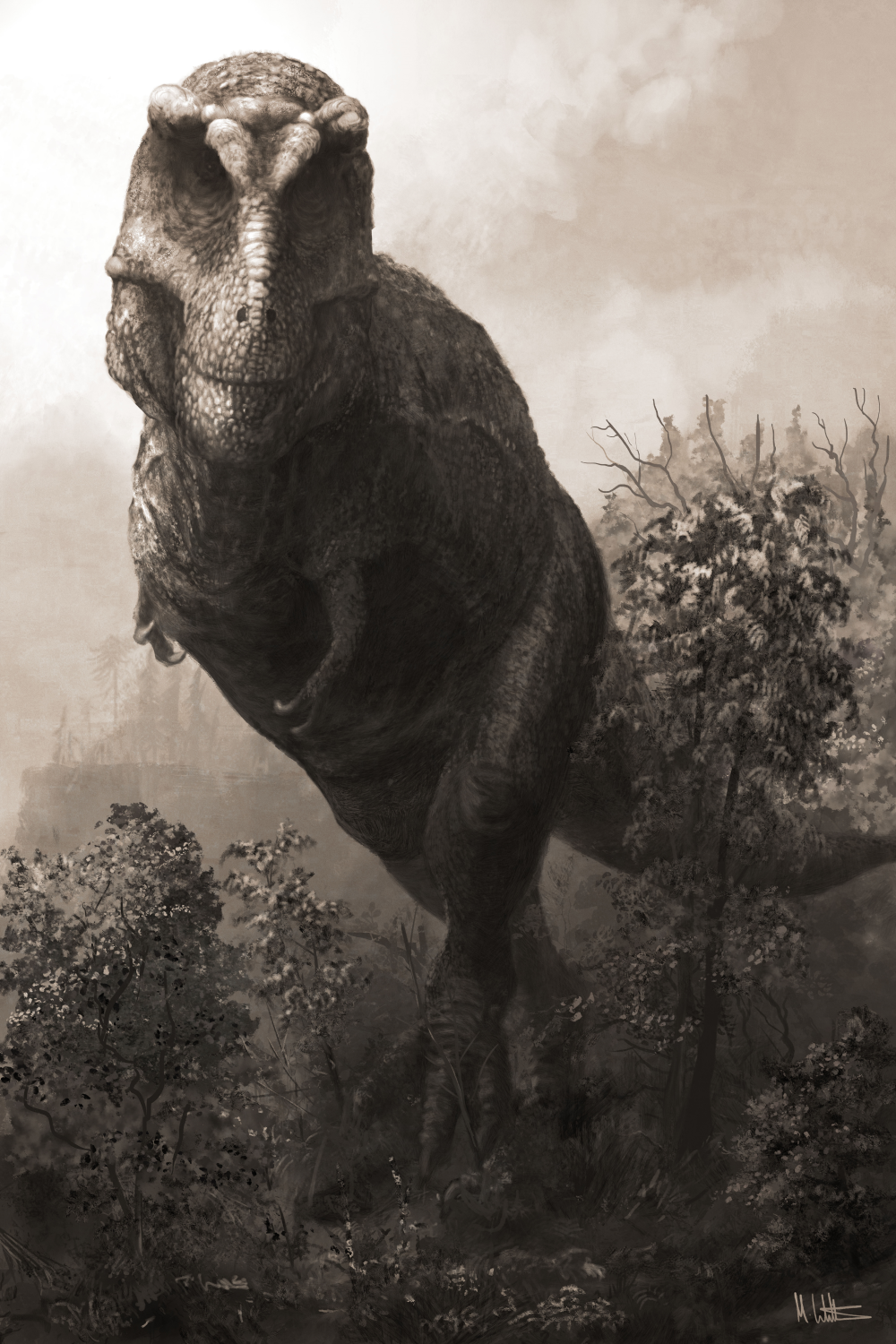It’s no secret that giants walked among the dinosaurs, but just how big were the biggest? A new study has used computer modeling to estimate that Tyrannosaurus rex may have been 70 percent heavier than the fossil record indicates, supersizing a predator that was already thought to be pretty damn big.
Most dinosaurs we see on display are casts, inspired by the scant fossil remains of many individuals jumbled together into an approximation of the real thing. Unless we find a complete animal it can be hard to know for certain how big it was in its entirety, which got scientists wondering: how big were the biggest, and will we ever find them?
To dive into the question, Dr Jordan Mallon of the Canadian Museum of Nature and Dr David Hone of Queen Mary University of London turned to computer modeling. Focusing on T. rex, they factored in population size, growth rate, lifespan, and gaps in the fossil record to model body-size variance at adulthood.
The analysis revealed that the largest T. rex specimens we know of today probably fall into the 99th percentile for the species, which basically means they’re among the largest 1 percent of T. rex. However, there could still have been a lot of variation within that 1 percent, so what beasts await us in the top 99.99th percentile?

As if T. rex wasn’t intimidating enough already.
Image credit: Mark Witton
According to their model, our current rate of T. rex fossil discovery means we’ll be looking for another 1,000 years before we find such a one-in-ten-thousand beast. Furthermore, the largest individual ever (representing a one in 2.5 billion animal – or is that 1.7 billion?) could have been as much as 70 percent heavier and 25 percent longer than the biggest T. rex discovered to date. Thus creating a T. rex that weighed 15 tonnes instead of 8.8 tonnes, and was 15 meters long (49 feet) instead of 12 meters (39 feet).
“Our study suggests that, for big fossil animals like T. rex, we really have no idea from the fossil record about the absolute sizes they might have reached,” said Mallon in a statement. “It’s fun to think about a 15 tonne T. rex, but the implications are also interesting from a biomechanical or ecological perspective.”
T. rex is an easy model pick given its fame and size, but the study leans into an ongoing debate about all extinct animals, and how it can be difficult to know if the specimens we’ve found represent the bigger or smaller individuals of a population. Think of it like future civilizations discovering a Danny DeVito fossil and what that might make them think of Homo sapiens, versus what they’d assume if they’d instead unearthed a fossil of Shaquille O’Neal.
But then take it back to dinosaurs, because we’re having a palaeontological discussion here.
“It’s important to stress that this isn’t really about T. rex, which is the basis of our study, but this issue would apply to all dinosaurs, and lots of other fossil species,” said Hone. “Arguing about ‘which is the biggest?’ based on a handful of skeletons really isn’t very meaningful.”
The study is published in the journal Ecology and Evolution.
Source Link: How Large Were The Biggest Dinosaurs? New Research Just Supersized T. Rex